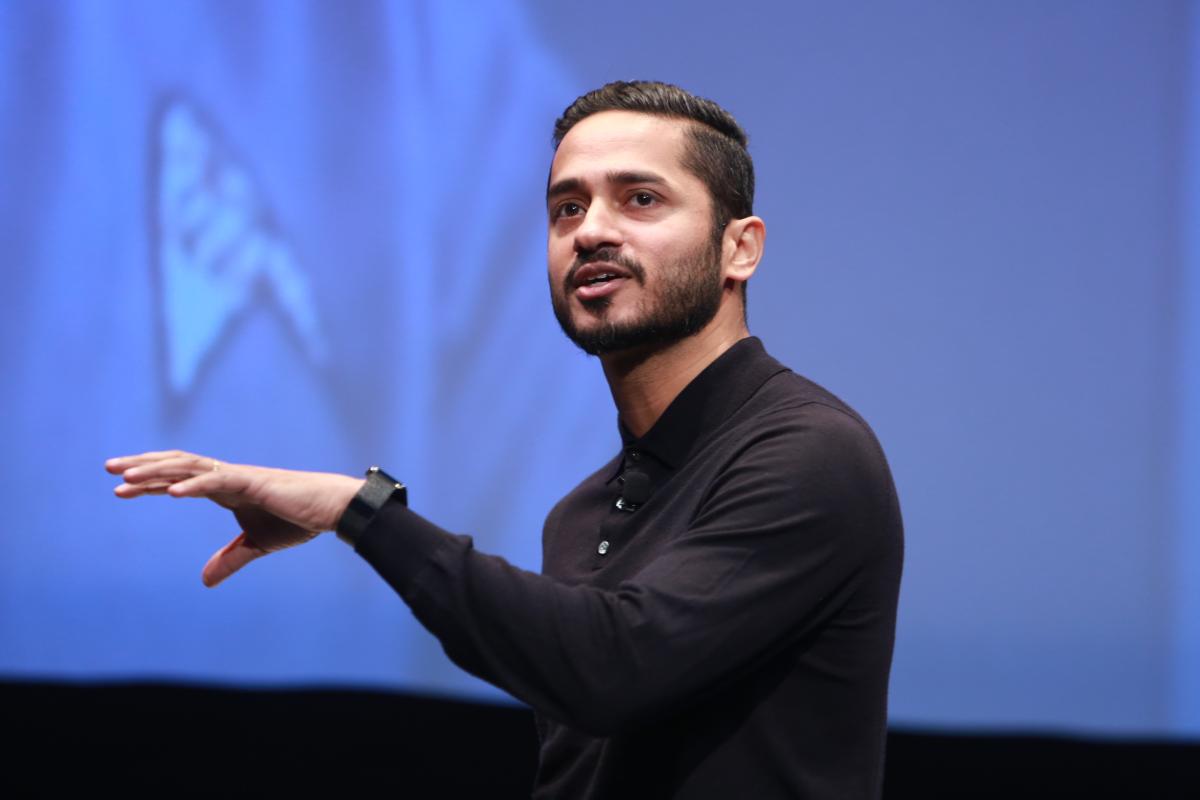Technology has been disrupting the journalism industry to its core for decades. As younger generations come of age, the need to keep them informed in ways that reach and speak to them requires moving into new verticals, and maybe even thinking about who your competitors are differently. After all, what is news today? How is it consumed, ingested, and most importantly where is it coming from? Mayur Gupta, Chief Marketing and Strategy Officer at Gannett, knows this because he’s living it, and if there on thing he’s focused on now, it’s reaching that younger generation.
“We want to continue to index younger and younger. That’s the growth segment we want to penetrate. So we are evolving and making a lot of investment in evolving our experiences, our content, the verticals. We are using a lot of those signals to identify what are the types of content? What formats, what type of experiences should we mark premium? At the same time, what does a premium experience look and feel like? And we know that as a user, you are living in this world where there’s no dearth of great content. We don’t compare ourselves with other journalism brands. We compare ourselves with the Netflix’s, the Apple’s, the Spotify’s of the world because in the end, it’s all content. Their world perhaps begins and indexes more on fiction. If you ask me in one phrase, my vision for the company, me personally, I would love to build a Netflix for non-fiction content which is the premier source and destination.”
Building a new brand identity in an established empire like Gannett is no small task. Mayur, listed as one of Forbes World’s Most Influential CMOs, explains how he taught marketing to himself while on the road for another job. In this episode he shows how he’s taken the helm at one of journalism’s most respected brands, and is driving the company towards reaching younger audiences as a growth strategy. He gives some insight into his strategy on unifying large and non-monolithic systems that have been in place for years. Plus, he shares some of the big lessons he learned at companies such as Freshly, and Spotify. All this up next on Marketing Trends.
Main Takeaways:
- Index to a Younger Crowd: One of the best places to go when thinking about growth, as a legacy brand, is thinking about how to reach a different demographic or population with your product or service. Change the format, the style, the content itself, and then begin testing and looking at the numbers to find what’s working. Get creative with how you see yourself as an organization to open yourself up to more opportunities for expanding into new verticals.
- Building a Strong Brand: Also a unique challenge for legacy brands is thinking about how to quantify and show the metrics on an audioce that’s been following you for decades, and that you’ve never-before had this kind of understanding about. You just need to get creative with the numbers to help show the ‘top of funnel’ investment impact on efficiency of your growth marketing efforts.
- The Challenge of Unifying a Non-Monolithic System: One of the challenges in working with a company that has over 100 years of brand history and legacy also means that there might be a lot of piece-meal tech in place that you have to address. Updating the infrastructure for content management, and implementing a universal tech stack for the data ecosystem might be the best first step to take in order to have trust and confidence in your data moving forward.
Key Quotes:
“There was no marketing for dummies. I would go back because I would be into so much pressure talking to these guys who build these ad servers that are serving hundreds of billions of impressions. And they’re talking about pixels and encryption, I had no clue. I didn’t even know what a publisher was, what a target is, what a venue and a placement is because I’m coming from a totally different world. So I would go to Wikipedia. I would go back to my hotel, and I would understand, ‘oh, this is what they mean.’”
”There is something inherent for kids at least in my time who came from countries like India and many more where you have way more number of people and applicants than the opportunities that are within the ecosystem where when you get an A your parents don’t get a back then the parents would not get excited. You got an ‘A’ grade. They want to know who else got an ‘A plus’ because [unless] you are coming first at something, you don’t really have a shot at getting anywhere because they’re just not enough resources.”
“It’s an unusual challenge and a role that I took on and feel very grateful and fortunate to have been given the opportunity. It’s an evolution from a hundred-year-old legacy advertising-led media business that has been typically obsessed with eyeballs and traffic to now fundamentally pivoting, to becoming a subscription content business that needs to be obsessed with user value and no longer eyeballs. That’s a 180 degree turn all the way from what data you store and what KPIs and what north star metrics are relevant to the mind and the culture and so on.”
“When you build that strong brand, that is culturally connected the challenge that we have on our site that we have to own is ‘how do you prove that incrementality with data, not just with emotion, how do you get creative with data and prove that the growth of your top of funnel investment, the growth in that brand of affinity actually has an impact on the efficiency of your growth marketing efforts in terms of efficiency in your cap, in terms of incrementality in your retention rate or a higher lifetime value until we bring that data.”
“We are investing just as much in data engineering and cleaning that up and looking for an organization like us, which is a portfolio of 260 brands within local markets. That’s the massive challenge because this company has grown with a series of acquisitions and mergers over the last four or five decades. We are not on a monolithic system. We’ve come a long, long way. We now have a universal content management system. We now have universal instrumentation and we are now getting a universal stack when it comes to our data ecosystem. So that’s the mechanical part, building the muscle to understand how we apply all these different levels and variables to predict the future.”
“We want to continue to index younger and younger. That’s the growth segment we want to penetrate. So we are evolving and making a lot of investment in evolving our experiences, our content, the verticals. We are using a lot of those signals to identify what are the types of content? What formats, what type of experiences should we mark premium? At the same time, what does a premium experience look and feel like? And we know that as a user, you are living in this world where there’s no dearth of great content. We don’t compare ourselves with other journalism brands. We compare ourselves with the Netflix’sthe Apple’s, the Spotify’s of the world, because at the end, it’s all content. Their world perhaps begins and indexes more on fiction. If you ask me in one phrase, my vision for the company, me personally, I would love to build a Netflix for non-fiction content which is the premier source and destination.”
Bio:
Mayur Gupta served on Gannett’s Board of Directors from October 2019 to September 2020, when he was named Chief Marketing and Strategy Officer. Prior to joining Gannett, Mr. Gupta was Chief Marketing Officer at Freshly, a growing food-tech company. Mr. Gupta has led digital initiatives at several companies, including VP of Growth and Marketing at Spotify and as Executive Vice President, Chief Marketing Officer of Healthgrades, a healthcare scheduling platform. Mr. Gupta was the first Chief Marketing Technologist at Kimberly-Clark. In 2014, Mr. Gupta was recognized as one of the “40 under 40” leading marketers in the industry by Brand Innovators.
—
Marketing Trends podcast is brought to you by Salesforce. Discover marketing built on the world’s number one CRM: Salesforce. Put your customer at the center of every interaction. Automate engagement with each customer. And build your marketing strategy around the entire customer journey. Salesforce. We bring marketing and engagement together. Learn more at salesforce.com/marketing.




